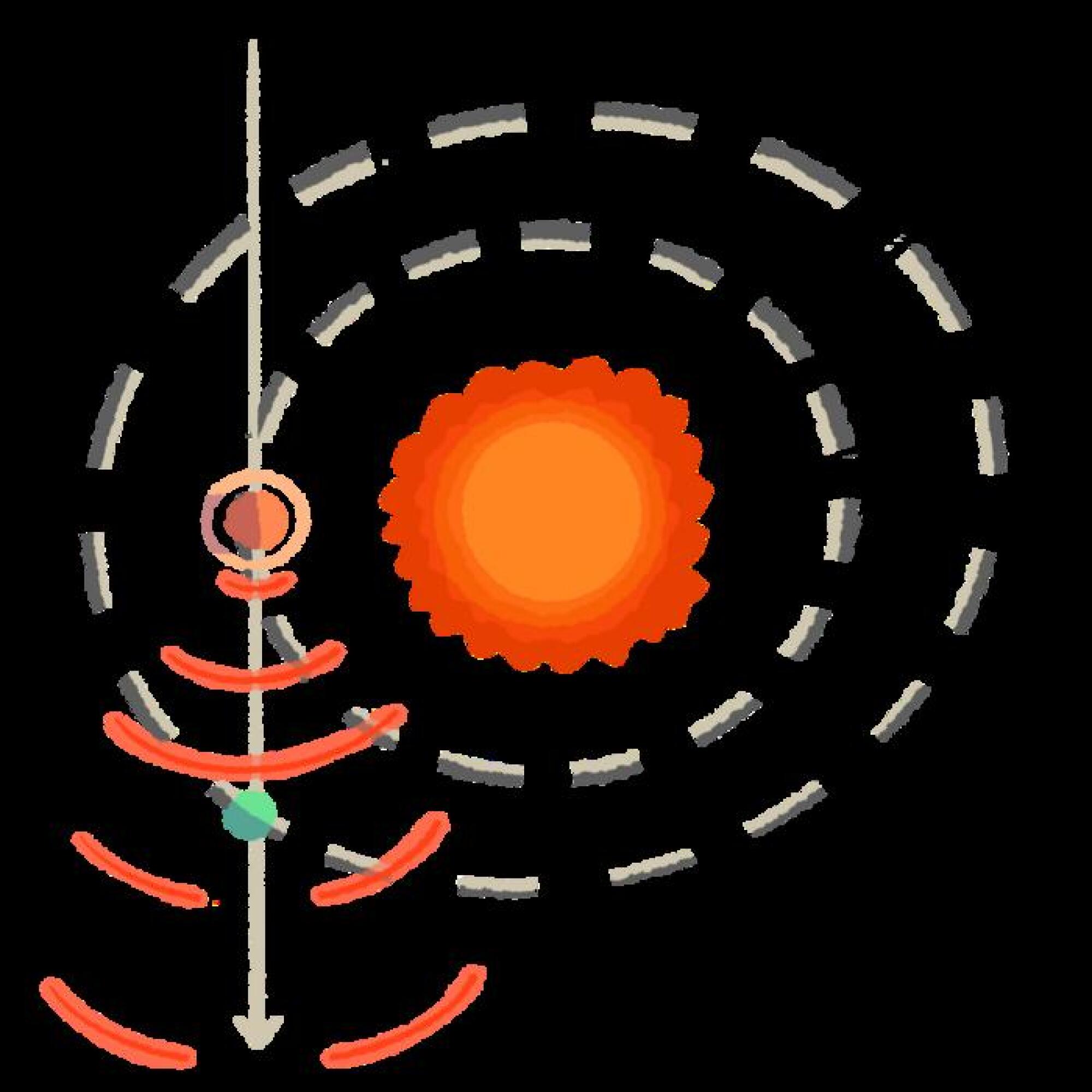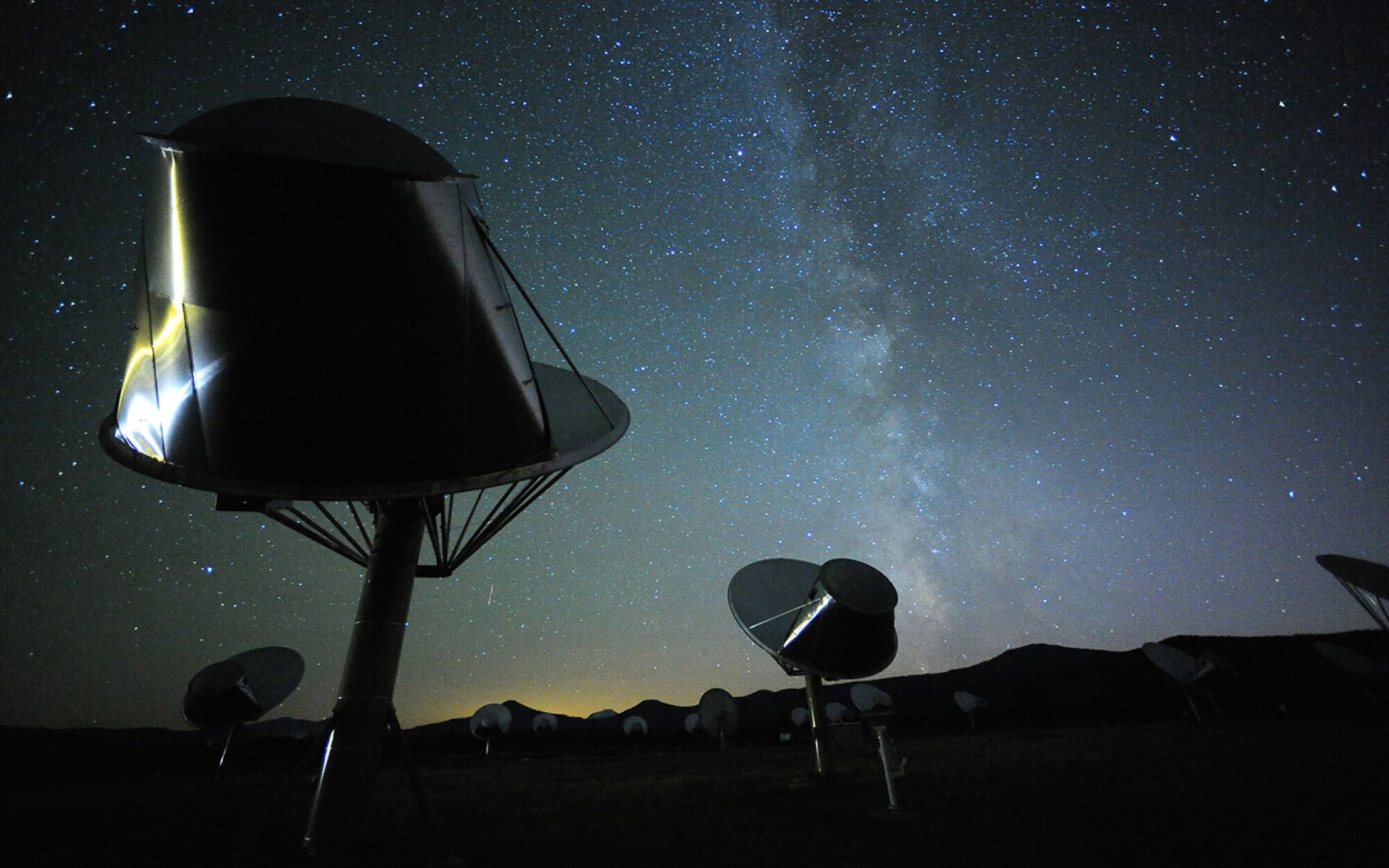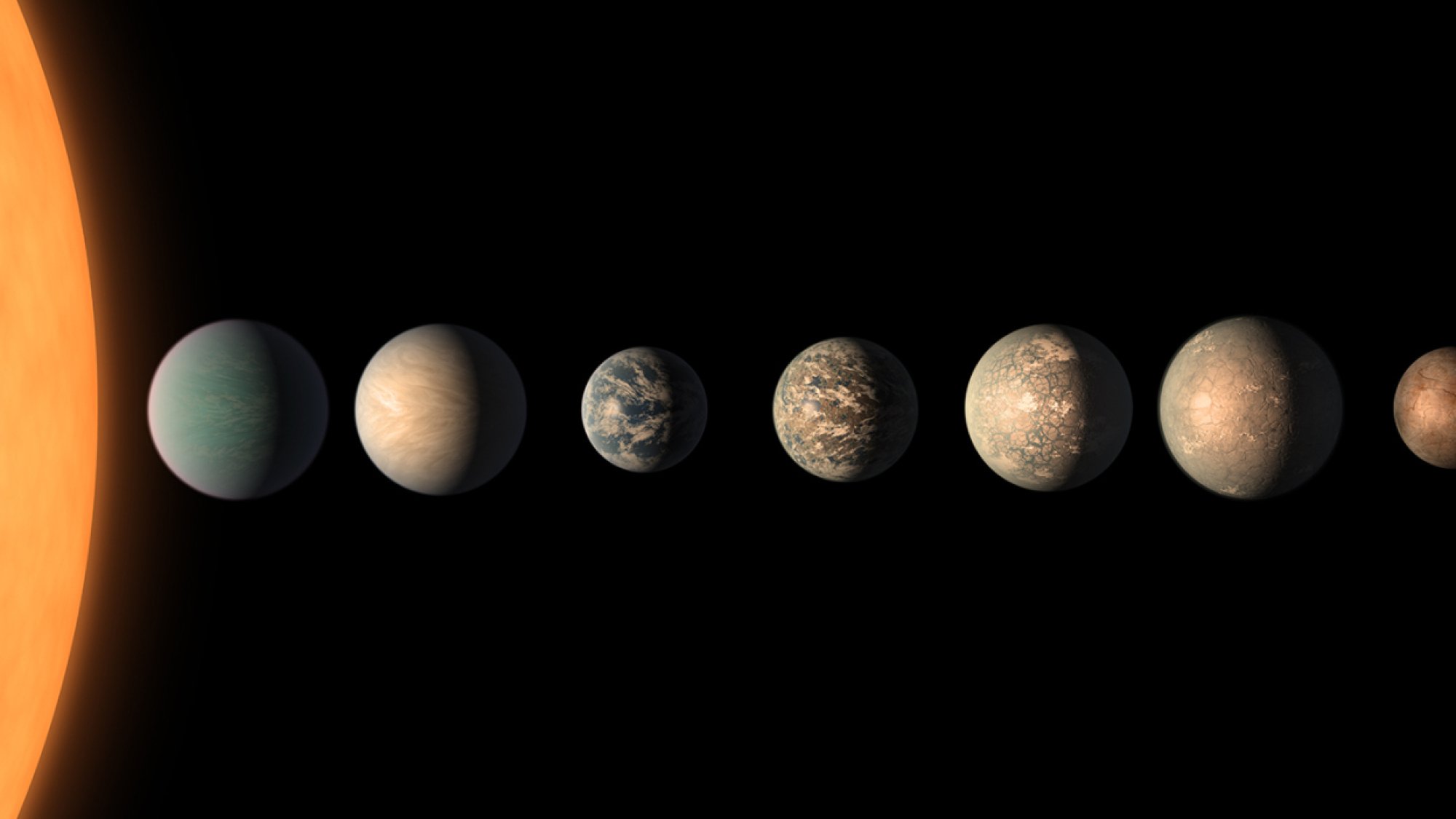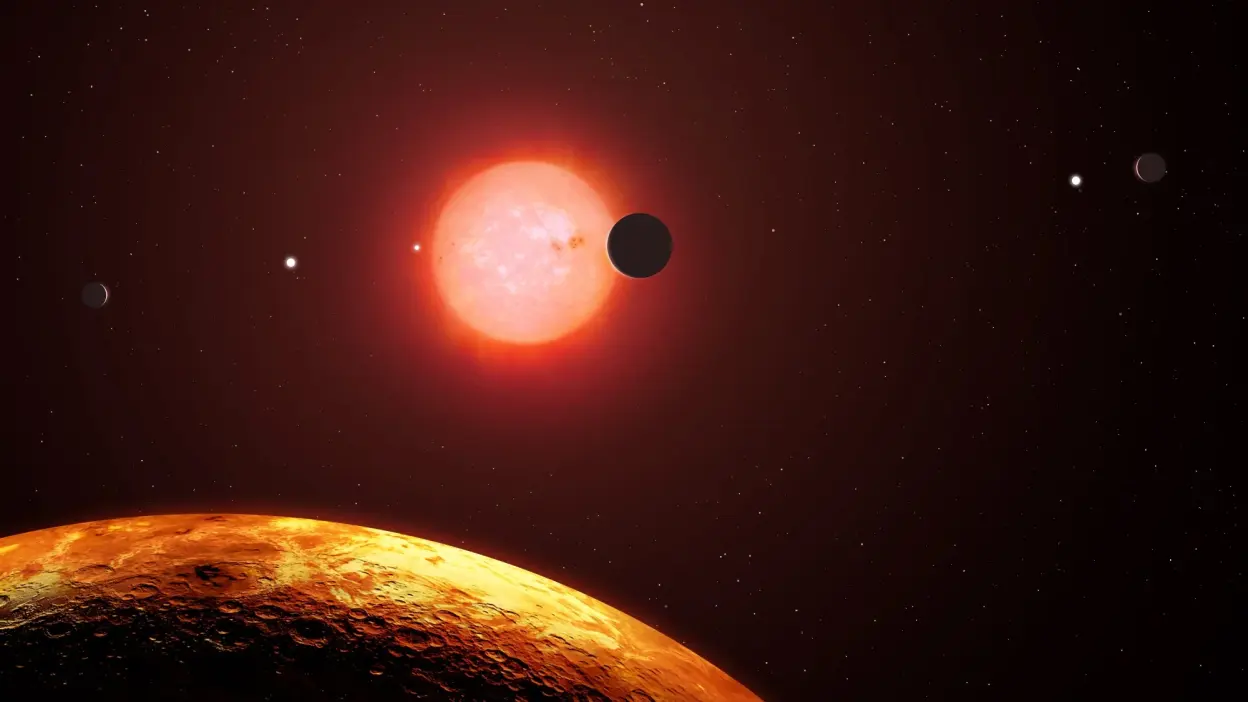Since its discovery eight years ago, the TRAPPIST-1 star system has excited astronomers because of its potential for supporting life.
Around this cool red dwarf are seven rocky, Earth-sized exoplanets, some of which are at the right distance to possibly have air and water.
While some scientists are using the James Webb Space Telescope, the leading observatory in the sky run by NASA and its European and Canadian counterparts, to study the planets' chemical compositions, others are cutting to the chase: looking for signs of intelligent alien civilizations in this system 40 light-years away from Earth.
A team of researchers recently spent 28 hours scanning space around these worlds, looking for radio signals from extraterrestrial technology. The project marked the longest single-target search for technosignatures from the TRAPPIST-1 system.
"Most searches assume some intent (behind the signals), like beacons, because our receivers have a sensitivity limit to a minimum transmitter power beyond anything we unintentionally send out," said Nick Tusay, a graduate student at Penn State University, in a statement. "But, with better equipment, like the upcoming Square Kilometer Array (SKA), we might soon be able to detect signals from an alien civilization communicating with its spacecraft."

The disappointing news: After analyzing thousands of radio signals, the team didn't discover any that would seem to have originated from someone other than humans. But the research wasn't a bust. Through this work, scientists have introduced a new way of sorting through signals in the future.
A paper describing the study, led by Penn State and the SETI Institute in California, will be published in the Astronomical Journal.
The team leveraged a technique focusing on so-called planet-planet occultations. This phenomenon occurs when one planet crosses in front of another from Earth's perspective. The researchers' premise was that radio signals sent between those two planets could "leak" and become detectable here. In our own solar system, an example of the kind of signal they were seeking would be a communication transmitted between mission controllers on Earth and a Mars orbiter.

Scientists used the Allen Telescope Array in California to search for a wide range of frequencies. The team winnowed 6 million potential signals to about 11,000 candidates for further analysis, homing in on narrowband signals that could be from an alien technology.
The SETI Institute, whose acronym stands for Search for Extraterrestrial Intelligence, included undergraduate college students in the project. The novices looked for radio transmissions from Mars orbiters to test whether the system could pick them up.
"With better equipment ... we might soon be able to detect signals from an alien civilization communicating with its spacecraft."
Often searches for extraterrestrial radio signals focus on the idea of looking for a beacon-like transmission that is intended to grab other citizens-of-the-universe's attention. But many scientists, such as the ones involved in this study, are not just interested in overt signals meant for us but those that are accidental.
"Technosignatures" are the broad term scientists use for evidence of technology. That could be an intentional message, like Morse code, or something that is more of a byproduct of technology, like the extra radio "pollution" from cell phone towers that leaks into space. Scientists tend to want to find a narrow pulse or frequency that couldn't be explained by a natural phenomenon.
"This research shows we are getting closer to detecting radio signals similar to the ones we send into space," Tusay said.
Scientists have only recently begun investigating the TRAPPIST-1 system. They've speculated that one or two of the TRAPPIST worlds could be habitable. So far the Webb telescope has taken a close look at TRAPPIST-1b and TRAPPIST-1c, the two planets closest to the system's red dwarf, a tiny but violent type of star commonly found throughout the Milky Way.
Those TRAPPIST worlds were deemed unlikely to have atmospheres — and, thus, life — but researchers are looking forward to learning about some of the others, especially TRAPPIST-1e. The planet is thought to be the right distance to allow liquid water to form lakes and oceans on its surface.

Whether such stars, sometimes called M dwarfs, can harbor planets with atmospheres is a key question Webb will try to answer. The observatory is prioritizing a massive study of rocky worlds outside our solar system, specifically to discover if planets orbiting closely around stars like TRAPPIST-1 could have air.
The campaign, first reported by Mashable, will budget about 500 hours for observation with the Webb telescope, along with about 250 orbits of ultraviolet observations with the Hubble Space Telescope to help characterize the host stars' activity.
"Webb is so sensitive that it can search for elements and molecules like oxygen, nitrogen, and carbon dioxide in exoplanet atmospheres," NASA posted on X, formerly Twitter. "The mystery remains — can planets orbiting small M dwarfs sustain the atmospheres needed to support life as we know it?"





























